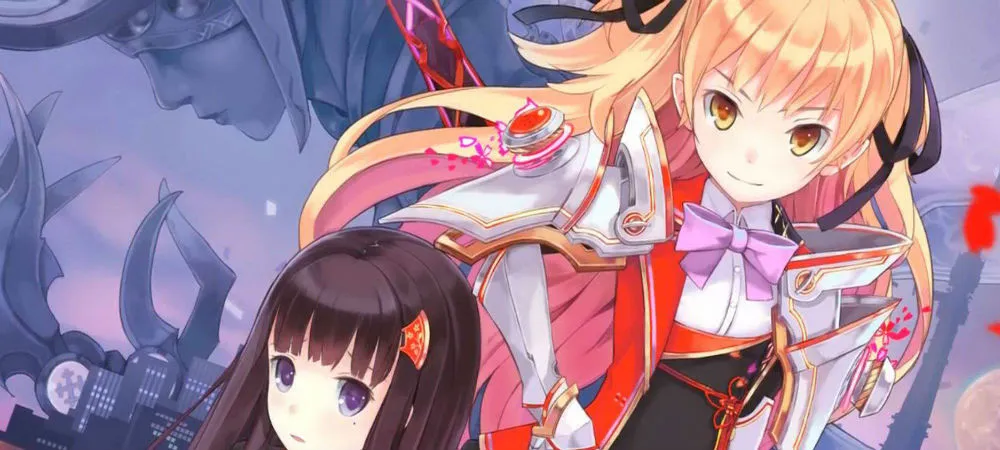The Walking Variants
One of the very first PC games I ever played was a dungeon crawler. It was called MadMaze, a title released on 1989, playable on the Prodigy internet service — yep, it was during the dialup era.
While crawlers may not be one of my go-to genres anymore, I’ve always had an affinity towards them, and I was particularly excited to see the Japanese market adapt and protect them all these years (with classics like Etrian Odyssey), when western support started to wane. Operation Abyss: New Tokyo Legacy may have some flaws, but it’s the latest in a long line of serviceable adventures.

Operation Abyss: New Tokyo Legacy (PlayStation TV, Vita [reviewed])
Developer: Experience Inc.
Publisher: MAGES, 5pb. Games (JP) / NIS America (EU, NA)
MSRP: $39.99
Release Date: July 24, 2014 (Japan) / June 5, 2015 (EU) / June 9, 2015 (NA)
Operation Abyss opens up with a bang — your character has just woken up in the “gloomy darkness,” next to multiple severed, bloodied bodies. Holy shit, right? It gets a little bit goofier from there, as a hooded man suddenly appears and tells you “basically, you’ve been kidnapped,” as an army of half-human zombie monsters attack. You’re immediately offered a choice: trust the man or not, which doesn’t really end up mattering. Then a Magical Girl shows up and fights a giant crocodile. It pretty much never lets up from here.
New Tokyo Legacy is set in a near-future version of Japan. Those creatures? They’re called Variants, and it’s up to the government-funded Code Physics Agency, which you’ve just been forcefully inducted into, to save the day. It must be said, if the silly intro wasn’t any indication, the art for the game is incredible, and full of life. A lot of scenes may feature static portraits, and the dungeon designs might be on the bland side, but the art style (and by proxy, the main cast) is always colorful and interesting.
Likewise, the darker elements of the game are just that — dark. Creatures look suitably horrific, the narrative can go darker when it needs to, and on occasion, I was straight-up creeped out. There’s also a ton of weird story elements like the blood of Florence Nightingale, Leonardo da Vinci, and Hanzo Hattori used for “Blood Codes,” to gain abilities and special powers. No one can say that Tokyo Legacy isn’t unique.
Like most lengthy dungeon crawler experiences (this one is roughly 40 hours), it takes about six hours of walking until it takes off sprinting, and by then I was sucked into the world. Dungeons aren’t obtuse, but as previously mentioned, they are on the bland side. After about 10 hours of play some of them started to blend together, and there isn’t enough indication on-screen to denote hidden areas or locations of interest. I definitely don’t want a streamlined “go here” indicator, it would just be nice if there was an inkling of uniqueness to the dungeons, since everything else is painstakingly crafted.
There’s lots of customization involved, including equipment and ability choices and statline tweaking. In terms of choices in relation to the narrative, there’s not a whole lot here. This is an old school dungeon crawler through and through, and although there are some light forks in the road, none of them are emotional or engaging. Your key plan here is to go and defeat monsters to further the overarching story — not your personal one. That’s partially because each playthrough uses randomly generated characters, which can be customized, but don’t necessarily play any real role. That extends to a lack of any real romantic element, since your party is essentially a collective.
Unlike Demon Gaze, Operation Abyss‘ recent predecessor, Legacy is a bit more forgiving. For instance, you can now go freely back to your base if you wish, which is where you’ll level up and sort through your massive inventory. The good news is that there’s no “rent” or statistical hit to worry about, and if you’re having trouble, heading back to rest up isn’t a terrible idea. There’s still a lot of menus to wade through and stats to painstakingly tweak back and forth, but it’s more accessible than a lot of other crawlers since it doesn’t penalize you at every turn. Because of that design decision though, it loses a bit of its edge.

Despite the fact that Operation Abyss: New Tokyo Legacy can be a bit by-the-numbers inside dungeons, it’s anything but in nearly every other facet of the game. While I probably won’t be rushing to complete it again anytime soon, it was a lengthy enough adventure that will stay fresh in my mind for some time.
[This review is based on a retail build provided by the publisher.]





Published: Jun 9, 2015 12:00 pm